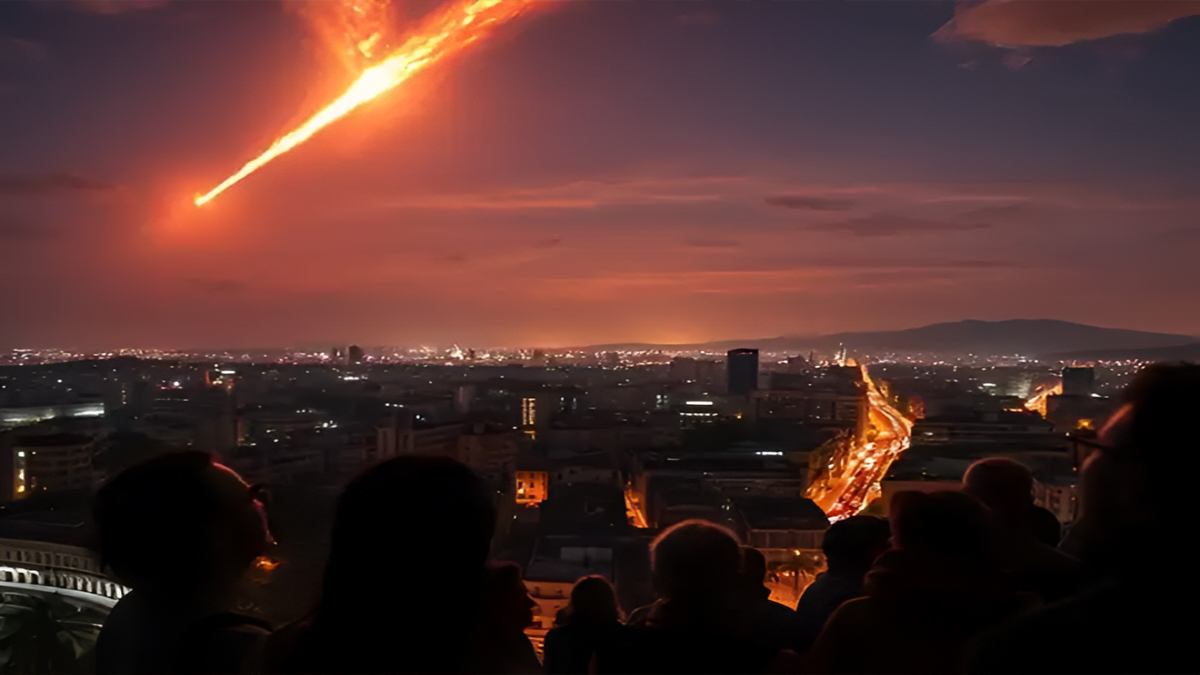Now Reading: Lyrid Meteor Shower to Peak on Monday Night, Promising a Dazzling Display of Fireballs
-
01
Lyrid Meteor Shower to Peak on Monday Night, Promising a Dazzling Display of Fireballs
Lyrid Meteor Shower to Peak on Monday Night, Promising a Dazzling Display of Fireballs

Sky enthusiasts in Meerut and across the globe are in for a celestial treat as the annual Lyrid meteor shower is set to reach its peak activity on the night of Monday, April 21, extending into the early hours of Tuesday, April 22, 2025. This well-regarded astronomical event, known for its potential to produce bright meteors called “fireballs,” is a must-see for both seasoned stargazers and casual observers.
The Lyrid meteor shower is one of the oldest recorded meteor showers, with observations dating back nearly 2,700 years. It occurs each April as Earth passes through the stream of dusty debris left behind by Comet Thatcher (C/1861 G1). As these tiny particles of cometary material enter our planet’s atmosphere at high speeds, they burn up due to friction, creating the luminous streaks we know as meteors or “shooting stars.”
This year, the peak of the Lyrid shower is predicted to occur around 13:00 Universal Time Coordinated (UTC) on Tuesday, April 22nd. For observers in Meerut, this translates to the best viewing opportunities arising in the pre-dawn hours of Tuesday, likely between 3:00 AM and 5:00 AM India Standard Time (IST). During this window, the radiant of the shower, which is the point in the constellation Lyra from which the meteors appear to originate, will be at its highest in the sky. While meteors can appear anywhere in the night sky, tracing their paths back will reveal their point of origin in Lyra.
Adding to the excitement, the Lyrid meteor shower is known for producing occasional bright meteors referred to as “fireballs.” These are exceptionally luminous meteors that can often leave glowing trails in their wake for several seconds. Fireballs occur when larger-than-average particles from the comet’s debris stream enter the atmosphere.
Despite the presence of a waning crescent moon, which will rise around 3:30 AM IST, its limited illumination (only about 27% full) is not expected to significantly hinder viewing conditions, especially during the optimal pre-dawn hours before its ascent.
To make the most of this celestial spectacle, it is crucial to find a viewing location away from city lights. Light pollution can dramatically reduce the visibility of fainter meteors. Ideal spots include rural areas, open fields, or even your backyard if it offers a relatively dark sky.
No special equipment is needed to observe the Lyrid meteor shower. Telescopes and binoculars actually restrict your field of view, making it harder to spot the swift streaks of light. Instead, simply find a comfortable spot to lie down or recline, allowing your eyes to adjust to the darkness for at least 15 to 30 minutes. Patience is key, as meteors can appear in bursts with lulls in between. Keep your gaze relaxed and directed towards the darkest part of the sky.
While the Northern Hemisphere generally enjoys the best views of the Lyrids, observers in the Southern Hemisphere may still be able to catch some meteors, particularly during the late evening and early morning hours.
So, mark your calendars for Monday night and set your alarms for the early hours of Tuesday. With clear skies and a little patience, you could witness a breathtaking display of the Lyrid meteor shower, perhaps even catching a glimpse of a brilliant fireball streaking across the Meerut sky. This is a fantastic opportunity to connect with the wonders of the universe from the comfort of your own surroundings.










